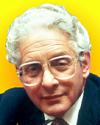
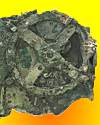
Derek John de Solla Price was an English-American physicist and science historian, also known as the information scientist who created scientometrics, the scientific measurement of the work of scientists, especially by way of analysing their publications and the citations within them. Beginning in 1951, Price studied the complex Antikythera geared mechanism recovered from an Ancient Greek shipwreck off the Greek island of Antikythera. By 1971 he and Greek nuclear physicist Charalampos Karakalos were making X-ray and gamma-ray images of the various fragments. In 1974, Price published their findings in a 70-page paper. Together with indications from gear settings and inscriptions, Price dated its manufacture at about 87 BC to be a mechanical astronomical calculator.«
Science Since Babylon, by Derek J. de Solla Price. - book suggestion.
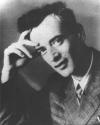
Born 22 Jan 1908; died 1 Apr 1968 at age 60.
Soviet physicist who worked in such fields as low-temperature physics, atomic and nuclear physics, and solid-state, stellar-energy, and plasma physics. Several physics terms bear his name. He was awarded the 1962 Nobel Prize for Physics for his theory to explain the peculiar superfluid behaviour of liquid helium at very low temperature (2.18 K). Landau's further contributions are partly reflected in such terms as Landau diamagnetism and Landau levels in solid-state physics, Landau damping in plasma physics, the Landau energy spectrum in low-temperature physics, or Landau cuts in high-energy physics.
Soviet physicist who worked in such fields as low-temperature physics, atomic and nuclear physics, and solid-state, stellar-energy, and plasma physics. Several physics terms bear his name. He was awarded the 1962 Nobel Prize for Physics for his theory to explain the peculiar superfluid behaviour of liquid helium at very low temperature (2.18 K). Landau's further contributions are partly reflected in such terms as Landau diamagnetism and Landau levels in solid-state physics, Landau damping in plasma physics, the Landau energy spectrum in low-temperature physics, or Landau cuts in high-energy physics.
What Is Relativity?, by Lev Davidovich Landau. - book suggestion.
Born 22 Jan 1904; died 2 Feb 1996 at age 92.
U.S. civil engineer who supervised the construction, completed in 1964, of the 28-km (17 1/2-mi) Chesapeake Bay Bridge-Tunnel across the mouth of the Chesapeake Bay in eastern Virginia, considered a marvel of modern engineering and one of the most impressive transportation facilities in the world.
U.S. civil engineer who supervised the construction, completed in 1964, of the 28-km (17 1/2-mi) Chesapeake Bay Bridge-Tunnel across the mouth of the Chesapeake Bay in eastern Virginia, considered a marvel of modern engineering and one of the most impressive transportation facilities in the world.

Born 22 Jan 1903; died 4 Dec 1987 at age 84.
American zoologist and mammalogist who studied various aspects of mammalogy, including home range, territoriality, morphology, behavior, and evolution. The regions he studied in particular include Michigan (1940-48), the Great Lakes (1956), Sonora (1938-41) and El Salvador (1961). He also examined the effects of the new Mexican volcano Paricutin on the vertebrates in its vicinity (1961). His interest in mammals developed early, from observing activities of prairie dogs on the family farm. As early as 1927, he wrote about A Simple Live Trap for Small Mammals in early article, in the Journal of Mammalogy. This led to development of the live trap, now widely used by mammalogists worldwide. Of his several books, his book, Field Guide to the Mammals (first published 1952), has popularized mammal observation by the layman.
American zoologist and mammalogist who studied various aspects of mammalogy, including home range, territoriality, morphology, behavior, and evolution. The regions he studied in particular include Michigan (1940-48), the Great Lakes (1956), Sonora (1938-41) and El Salvador (1961). He also examined the effects of the new Mexican volcano Paricutin on the vertebrates in its vicinity (1961). His interest in mammals developed early, from observing activities of prairie dogs on the family farm. As early as 1927, he wrote about A Simple Live Trap for Small Mammals in early article, in the Journal of Mammalogy. This led to development of the live trap, now widely used by mammalogists worldwide. Of his several books, his book, Field Guide to the Mammals (first published 1952), has popularized mammal observation by the layman.
A Field Guide to Mammals: North America north of Mexico, by William Henry Burt. - book suggestion.
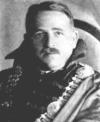
Born 22 Jan 1880; died 28 Feb 1956 at age 76.
Hungarian mathematician and pioneer of functional analysis, which has found important applications to mathematical physics. His theorem, now called the Riesz-Fischer theorem, which he proved in 1907, is fundamental in the Fourier analysis of Hilbert space. It was the mathematical basis for proving that matrix mechanics and wave mechanics were equivalent. This is of fundamental importance in early quantum theory. His book Leçon's d'analyse fonctionnelle (written jointly with his student B Szökefalvi-Nagy) is one of the most readable accounts of functional analysis ever written. Beyond any mere abstraction for the sake of a structure theory, he was always turning back to the applications in some concrete and substantial situation.
Hungarian mathematician and pioneer of functional analysis, which has found important applications to mathematical physics. His theorem, now called the Riesz-Fischer theorem, which he proved in 1907, is fundamental in the Fourier analysis of Hilbert space. It was the mathematical basis for proving that matrix mechanics and wave mechanics were equivalent. This is of fundamental importance in early quantum theory. His book Leçon's d'analyse fonctionnelle (written jointly with his student B Szökefalvi-Nagy) is one of the most readable accounts of functional analysis ever written. Beyond any mere abstraction for the sake of a structure theory, he was always turning back to the applications in some concrete and substantial situation.
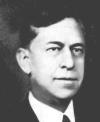
Born 22 Jan 1874; died 17 Jan 1954 at age 79.
American mathematician who made important contributions to the theory of numbers and the theory of groups. He published 18 books including Linear groups with an exposition of the Galois field theory. The 3-volume History of the Theory of Numbers (1919-23) is another famous work still much consulted today.
American mathematician who made important contributions to the theory of numbers and the theory of groups. He published 18 books including Linear groups with an exposition of the Galois field theory. The 3-volume History of the Theory of Numbers (1919-23) is another famous work still much consulted today.
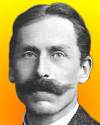
Born 22 Jan 1865; died 25 Feb 1947 at age 82.
Louis Carl Heinrich Freidrich Paschen was a German physicist who was an outstanding experimental spectroscopist. In 1895, in a detailed study of the spectral series of helium, an element then newly discovered on earth, he showed the identical match with the spectral lines of helium as originally found in the solar spectrum by Janssen and Lockyer nearly 40 years earlier. He is remembered for the Paschen Series of spectral lines of hydrogen which he elucidated in 1908.«
Louis Carl Heinrich Freidrich Paschen was a German physicist who was an outstanding experimental spectroscopist. In 1895, in a detailed study of the spectral series of helium, an element then newly discovered on earth, he showed the identical match with the spectral lines of helium as originally found in the solar spectrum by Janssen and Lockyer nearly 40 years earlier. He is remembered for the Paschen Series of spectral lines of hydrogen which he elucidated in 1908.«

Born 22 Jan 1855; died 30 Jul 1916 at age 61.
Albert Ludwig Sigismund Neisser was a German physician, who specialized in dermatology and venereal diseases. He discovered gonococcus (1879), the small bacterium that causes gonorrhea. In Norway, he examined patients afflicted with leprosy and demonstrated the existence of the bacillus causing the disease (1879). He was the first to make the connection clear between it and the disease. In his studies of syphilis, he failed to find a successful innoculation against the disease, and may even have spread it instead. more
Albert Ludwig Sigismund Neisser was a German physician, who specialized in dermatology and venereal diseases. He discovered gonococcus (1879), the small bacterium that causes gonorrhea. In Norway, he examined patients afflicted with leprosy and demonstrated the existence of the bacillus causing the disease (1879). He was the first to make the connection clear between it and the disease. In his studies of syphilis, he failed to find a successful innoculation against the disease, and may even have spread it instead. more
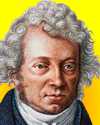
Born 22 Jan 1775; died 10 Jun 1836 at age 61. quotes
French mathematician, physicist and chemist who founded and named the science of electrodynamics, now known as electromagnetism. His interests included mathematics, metaphysics, physics and chemistry. In mathematics he worked on partial differential equations. Ampère made significant contributions to chemistry. In 1811 he suggested that an anhydrous acid prepared two years earlier was a compound of hydrogen with an unknown element, analogous to chlorine, for which he suggested the name fluorine. He produced a classification of elements in 1816. Ampère also worked on the wave theory of light. By the early 1820s, Ampère was working on a combined theory of electricity and magnetism, after hearing about Hans Oersted’s experiments.
French mathematician, physicist and chemist who founded and named the science of electrodynamics, now known as electromagnetism. His interests included mathematics, metaphysics, physics and chemistry. In mathematics he worked on partial differential equations. Ampère made significant contributions to chemistry. In 1811 he suggested that an anhydrous acid prepared two years earlier was a compound of hydrogen with an unknown element, analogous to chlorine, for which he suggested the name fluorine. He produced a classification of elements in 1816. Ampère also worked on the wave theory of light. By the early 1820s, Ampère was working on a combined theory of electricity and magnetism, after hearing about Hans Oersted’s experiments.
André-Marie Ampère: Enlightenment and Electrodynamics, by James R. Hofmann. - book suggestion.
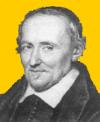
Born 22 Jan 1592; died 24 Oct 1655 at age 63. quotes
French mathematician and philosopher who revived Epicureanism as a substitute for Aristotelianism, attempting in the process to reconcile Atomism's mechanistic explanation of nature with Christian belief in immortality, free will, an infinite God, and creation. Johannes Kepler had predicted a transit of Mercury would occur in 1631. Gassendi used a Galilean telescope to observed the transit, by projecting the sun's image on a screen of paper. He wrote on astronomy, his own astronomical observations and on falling bodies.
French mathematician and philosopher who revived Epicureanism as a substitute for Aristotelianism, attempting in the process to reconcile Atomism's mechanistic explanation of nature with Christian belief in immortality, free will, an infinite God, and creation. Johannes Kepler had predicted a transit of Mercury would occur in 1631. Gassendi used a Galilean telescope to observed the transit, by projecting the sun's image on a screen of paper. He wrote on astronomy, his own astronomical observations and on falling bodies.
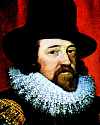
Born 22 Jan 1561; died 9 Apr 1626 at age 65. quotes
English philosopher remembered for his influence promoting a scientific method. He held that the aim of scientific investigation is practical application of the understanding of nature to improve man’s condition. He wrote that scientists should concentrate on certain important kinds of experimentally reproducible situations, (which he called “prerogative instances”). After tabulating such phenomena, the investigator should also aim to make a gradual ascent to more and more comprehensive laws, and will acquire greater and greater certainty as he or she moves up the pyramid of laws. At the same time each law that is reached should lead him to new kinds of experiment, that is, to kinds of experiment over and above those that led to the discovery of the law. more
English philosopher remembered for his influence promoting a scientific method. He held that the aim of scientific investigation is practical application of the understanding of nature to improve man’s condition. He wrote that scientists should concentrate on certain important kinds of experimentally reproducible situations, (which he called “prerogative instances”). After tabulating such phenomena, the investigator should also aim to make a gradual ascent to more and more comprehensive laws, and will acquire greater and greater certainty as he or she moves up the pyramid of laws. At the same time each law that is reached should lead him to new kinds of experiment, that is, to kinds of experiment over and above those that led to the discovery of the law. more
Novum Organum: With Other Parts of the Great Instauration by Francis Bacon, by Peter Urbach. (Ed.) and John Gibson (Ed.). - book suggestion.
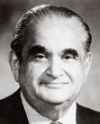
Died 22 Jan 1994 at age 76 (born 30 Sep 1917).
American inventor of the teleprompter, who headed the TelePrompTer company. In the mid 50's, Kahn designed and built what was perhaps the first remotely controlled, multi-image, rear projection system in the world for the U.S. Army's facility in Huntsville, Ala., to make persuasive presentations to visiting Congressmen. With five images (one large, 3¼ by 4 slide or film image in the center flanked smaller slides at each side) and random access it could search and select among 500 slides. TelePrompTer also made many technological contributions to the early cable TV industry. In 1961, Kahn and Hub Schlafley demonstrated Key TV, an early pay TV concept, by showing the second Patterson vs. Johansson heavyweight fight, essentially giving birth to pay-per-view.
American inventor of the teleprompter, who headed the TelePrompTer company. In the mid 50's, Kahn designed and built what was perhaps the first remotely controlled, multi-image, rear projection system in the world for the U.S. Army's facility in Huntsville, Ala., to make persuasive presentations to visiting Congressmen. With five images (one large, 3¼ by 4 slide or film image in the center flanked smaller slides at each side) and random access it could search and select among 500 slides. TelePrompTer also made many technological contributions to the early cable TV industry. In 1961, Kahn and Hub Schlafley demonstrated Key TV, an early pay TV concept, by showing the second Patterson vs. Johansson heavyweight fight, essentially giving birth to pay-per-view.
Died 22 Jan 1984 at age 68 (born 30 Jun 1915).
American paleontologist whose continuing investigations of plant fossils successively pushed back the estimates of the origin of life to more than 3.4 thousand million years ago. In the 1950s, near Lake Superior, Barghoorn discovered fossilized colonies of blue-green algae and aquatic fungi dating to two thousand million years old. By the 1960s, he had found fossil evidence dating back another thousand million years, suggesting life appearing shortly after Earth's origin provided suitable environment conditions. The oldest fossil remains of life were organisms closely resembling today's blue-green algae (bacteria using chlorophyll for photosynthesis), found in rock from South Africa. He also contributed to understanding the early evolution of flowering plants, vegetational changes during the Pleistocene ice age, and the formation of coal.«
American paleontologist whose continuing investigations of plant fossils successively pushed back the estimates of the origin of life to more than 3.4 thousand million years ago. In the 1950s, near Lake Superior, Barghoorn discovered fossilized colonies of blue-green algae and aquatic fungi dating to two thousand million years old. By the 1960s, he had found fossil evidence dating back another thousand million years, suggesting life appearing shortly after Earth's origin provided suitable environment conditions. The oldest fossil remains of life were organisms closely resembling today's blue-green algae (bacteria using chlorophyll for photosynthesis), found in rock from South Africa. He also contributed to understanding the early evolution of flowering plants, vegetational changes during the Pleistocene ice age, and the formation of coal.«
Cradle of Life: The Discovery of Earth's Earliest Fossils, by J. William Schop. - book suggestion.
Died 22 Jan 1982 at age 67 (born 22 Jul 1914).
Edward Rolke Farber was an American inventor who devised a portable, battery-operated stroboscopic flash unit for still cameras (1937) that effectively “stopped action.” He began his career as a photojournalist on the staff of the Milwaukee Journal. After studying electrical engineering at Northwestern University, Farber went on to design flash equipment for the U.S. Army during World War II, and then established his own electronic-flash manufacturing firm. He was a good friend and collaborator of Harold Edgerton and developed the first practical portable strobe flash for news photographers. In 1942, the Milwaukee Journal became the first newspaper to furnish all of its photographers with the portable flash. Weighing only 13.5 pounds, it was a considerable improvement over the 90-pound units photographers used prior to Farber's invention. He sold his Strobe Research firm in 1954. He was a photographic adviser to the U.S. Government during its intercontinental ballistic missile testing program in the late 1950's.
Edward Rolke Farber was an American inventor who devised a portable, battery-operated stroboscopic flash unit for still cameras (1937) that effectively “stopped action.” He began his career as a photojournalist on the staff of the Milwaukee Journal. After studying electrical engineering at Northwestern University, Farber went on to design flash equipment for the U.S. Army during World War II, and then established his own electronic-flash manufacturing firm. He was a good friend and collaborator of Harold Edgerton and developed the first practical portable strobe flash for news photographers. In 1942, the Milwaukee Journal became the first newspaper to furnish all of its photographers with the portable flash. Weighing only 13.5 pounds, it was a considerable improvement over the 90-pound units photographers used prior to Farber's invention. He sold his Strobe Research firm in 1954. He was a photographic adviser to the U.S. Government during its intercontinental ballistic missile testing program in the late 1950's.
Died 22 Jan 1981 at age 86 (born 24 Aug 1894).
German meteorologist who was one of the founders of microclimatology (the study of the climatic conditions within a few metres of the ground surface). His observations, made above grassy fields or areas of crops and below forest canopies, elucidated the complex and subtle interactions between vegetation and the heat, radiation, and water balances of the air and soil.
German meteorologist who was one of the founders of microclimatology (the study of the climatic conditions within a few metres of the ground surface). His observations, made above grassy fields or areas of crops and below forest canopies, elucidated the complex and subtle interactions between vegetation and the heat, radiation, and water balances of the air and soil.
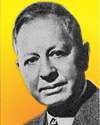
Died 22 Jan 1979 at age 93 (born 17 May 1885). quotes
American plant pathologist. As an agricultural specialist, Stakman pioneered methods to identify and combat diseases of important crops. In 1921, he attached Vaseline-coated slides to plane wings to collect evidence of parasitic red spores of crop fungal rusts in the air, and proved that the disease seasonally blew across the nation. After investigating the nature and control of fungal leaf rust in cereals at the University of Minnesota, Stakman's interest expanded to international scientific affairs. He pleaded for a joint U.S.-Mexico station to research crop improvement. Established in 1943, this was the first of a worldwide network of research stations under the International Center for Corn and Wheat Improvement, an organization to increase food production in developing nations. He wrote many scientific papers, and co-authored Campaign Against Hunger (1967).«
American plant pathologist. As an agricultural specialist, Stakman pioneered methods to identify and combat diseases of important crops. In 1921, he attached Vaseline-coated slides to plane wings to collect evidence of parasitic red spores of crop fungal rusts in the air, and proved that the disease seasonally blew across the nation. After investigating the nature and control of fungal leaf rust in cereals at the University of Minnesota, Stakman's interest expanded to international scientific affairs. He pleaded for a joint U.S.-Mexico station to research crop improvement. Established in 1943, this was the first of a worldwide network of research stations under the International Center for Corn and Wheat Improvement, an organization to increase food production in developing nations. He wrote many scientific papers, and co-authored Campaign Against Hunger (1967).«
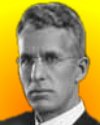
Died 22 Jan 1966 at age 85 (born 19 Apr 1880).
American physicist who independently discovered the powder method of X-ray analysis of crystals (1917), which permits the study of crystalline materials in a finely divided microcrystalline, or powder, state. His first work was on electron tubes, X-ray crystallography, and (during WW II) piezoelectricity. In the 1920's, he studied noise measurements in diodes and triodes. In the 1930's, he also took interest in metallurgy and glass science. His best-known work was done after the war, especially his classic paper on the effect of a uniform magnetic field on the motion of electrons between coaxial cylinders. He also invented the magnetron (1921) and the thyratron (1927), and other electron tubes with wide application as components in electronic circuits.
American physicist who independently discovered the powder method of X-ray analysis of crystals (1917), which permits the study of crystalline materials in a finely divided microcrystalline, or powder, state. His first work was on electron tubes, X-ray crystallography, and (during WW II) piezoelectricity. In the 1920's, he studied noise measurements in diodes and triodes. In the 1930's, he also took interest in metallurgy and glass science. His best-known work was done after the war, especially his classic paper on the effect of a uniform magnetic field on the motion of electrons between coaxial cylinders. He also invented the magnetron (1921) and the thyratron (1927), and other electron tubes with wide application as components in electronic circuits.
Died 22 Jan 1951 at age 63 (born 22 Apr 1887).
Danish mathematician who devised a theory that concerned generalizations of functions with periodic properties, the theory of almost periodic functions. His brother was noted physicist Niels Bohr.
Danish mathematician who devised a theory that concerned generalizations of functions with periodic properties, the theory of almost periodic functions. His brother was noted physicist Niels Bohr.
Died 22 Jan 1909 at age 83 (born 28 Jun 1825).
German chemist.
German chemist.
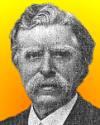
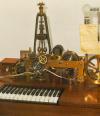
Anglo-American inventor of the carbon microphone, which was a significant contribution to telephony. His family emigrated to the U.S. when he was age seven. In 1850 he became professor of music at St. Joseph's College, Bardstown, Ky. Five years later, after he resigned, he took out a U.S. patent for the first telegraph system printing the text at the sending and at the receiving end, thus doing away with a special alphabetic code as required with the Morse telegraph. It was produced before the typewriter was even invented. Also, Hughes's loose-contact microphone, invented in 1878, was the forerunner of the various carbon microphones now in use. He also invented the induction balance and worked with the theory of magnetism.«[Image right: Hughes telegraph]
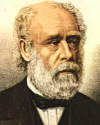
Died 22 Jan 1887 at age 83 (born 21 Dec 1803).
English mechanical engineer (Baronet), who pioneered precision measurement. He held many patents for machine tools, textile and knitting machinery, and road-sweeping machines. He originated a scraping technique to make a true plane surface (1825). He advocated using the decimal system. In 1841, his standard screw threads were adopted by the Woolwich Arsenal. By 1851 Whitworth's machine tools were internationally known for their accuracy and quality, as well as his screw cutting lathes, his planing, drilling, slotting, and shaping machines, and his millionth-part measuring machine. He also did pioneering work in ordnance, creating a method for casting ductile steel to replace hard steel, which is subject to fracture.«
English mechanical engineer (Baronet), who pioneered precision measurement. He held many patents for machine tools, textile and knitting machinery, and road-sweeping machines. He originated a scraping technique to make a true plane surface (1825). He advocated using the decimal system. In 1841, his standard screw threads were adopted by the Woolwich Arsenal. By 1851 Whitworth's machine tools were internationally known for their accuracy and quality, as well as his screw cutting lathes, his planing, drilling, slotting, and shaping machines, and his millionth-part measuring machine. He also did pioneering work in ordnance, creating a method for casting ductile steel to replace hard steel, which is subject to fracture.«
Sir Joseph Whitworth: The World's Best Mechanician, by Norman Atkinson. - book suggestion.
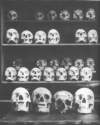
Died 22 Jan 1840 at age 87 (born 11 May 1752).
German anthropologist, physiologist and comparative anatomist, frequently called the father of physical anthropology, who proposed one of the earliest classifications of the races of mankind. He divided humanity into five races: Caucasian, Ethiopian, American, Mongolian, and Malay. Blumenbach coined the term Caucasian (derived from the residents of Georgia in the Caucasus Mountains) to describe the white race; and the term Mongolian. Blumenbach was a pioneer collector of human crania and was among the first to place comparative anatomy on a completely scientific basis. His book Collectionis Suae Craniorum Diversarum Gentium Illustratae Decades (1790-1828) contains the results of his observations of the skulls of different races.
German anthropologist, physiologist and comparative anatomist, frequently called the father of physical anthropology, who proposed one of the earliest classifications of the races of mankind. He divided humanity into five races: Caucasian, Ethiopian, American, Mongolian, and Malay. Blumenbach coined the term Caucasian (derived from the residents of Georgia in the Caucasus Mountains) to describe the white race; and the term Mongolian. Blumenbach was a pioneer collector of human crania and was among the first to place comparative anatomy on a completely scientific basis. His book Collectionis Suae Craniorum Diversarum Gentium Illustratae Decades (1790-1828) contains the results of his observations of the skulls of different races.
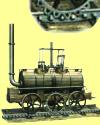
Inset: cog wheel
Died 22 Jan 1831 (born 1783).
English inventor, designer of the first practical and successful railway locomotive. Blenkinsop wanted to find a way of reducing the cost of transporting coal from the Middleton Colliery, Yorkshire, to the nearby town of Leeds. In 1811, he joined forces with engineer Matthew Murray to produce a two-cylinder, geared steam locomotive that utilized a tooth-rack rail system of propulsion. They had rejected the idea that a steam locomotive with smooth wheels on a smooth rail would have sufficient adhesion to propel itself and a load. The Salamanca locomotive, with its cog-toothed driving wheels, first appeared in public on 24 Jun 1812. Four Blenkinsop engines (built 1812-13) hauled coal over cast-iron rails until 1830.
English inventor, designer of the first practical and successful railway locomotive. Blenkinsop wanted to find a way of reducing the cost of transporting coal from the Middleton Colliery, Yorkshire, to the nearby town of Leeds. In 1811, he joined forces with engineer Matthew Murray to produce a two-cylinder, geared steam locomotive that utilized a tooth-rack rail system of propulsion. They had rejected the idea that a steam locomotive with smooth wheels on a smooth rail would have sufficient adhesion to propel itself and a load. The Salamanca locomotive, with its cog-toothed driving wheels, first appeared in public on 24 Jun 1812. Four Blenkinsop engines (built 1812-13) hauled coal over cast-iron rails until 1830.
Died 22 Jan 1818 at age 56 (born 13 Sep 1761).
American physician and anatomist who studied anatomy in England under John Hunter, and was later affiliated with the Pennsylvania Hospital (1793-1810). In 1809, he founded a vaccine society, which within its first year had vaccinated over a thousand people. As a lecturer, he introduced the instructional use of large scale models of the smaller parts of the human body. His sole original contribution to anatomy was related to the spenoid sinuses (1814). Later in life, he published papers describing paleontological finds at Big bone Lick, Kentucky. He was active as an Abolitionist, as he held a belief from a young age against slavery. The wisteria flowering shrub was named for him by his friend, Thomas Nutall.«
American physician and anatomist who studied anatomy in England under John Hunter, and was later affiliated with the Pennsylvania Hospital (1793-1810). In 1809, he founded a vaccine society, which within its first year had vaccinated over a thousand people. As a lecturer, he introduced the instructional use of large scale models of the smaller parts of the human body. His sole original contribution to anatomy was related to the spenoid sinuses (1814). Later in life, he published papers describing paleontological finds at Big bone Lick, Kentucky. He was active as an Abolitionist, as he held a belief from a young age against slavery. The wisteria flowering shrub was named for him by his friend, Thomas Nutall.«
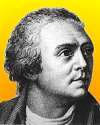
Died 22 Jan 1799 at age 58 (born 17 Feb 1740). quotes
Swiss physicist, geologist, and early Alpine explorer. He made an extensive study of the structure of the Alps, described in the four volumes of Voyages dans les Alpes (1779-96). His theory was neptunian, but with uniformitarian overtones. The word geology was introduced into scientific nomenclature by Saussure with the publication of the first volume. Saussure developed what was probably the first electrometer (1766), used to measure electric potential. He also developed an improved hygrometer to measure atmospheric humidity (1783), the first to use human hair for the purpose.
Swiss physicist, geologist, and early Alpine explorer. He made an extensive study of the structure of the Alps, described in the four volumes of Voyages dans les Alpes (1779-96). His theory was neptunian, but with uniformitarian overtones. The word geology was introduced into scientific nomenclature by Saussure with the publication of the first volume. Saussure developed what was probably the first electrometer (1766), used to measure electric potential. He also developed an improved hygrometer to measure atmospheric humidity (1783), the first to use human hair for the purpose.
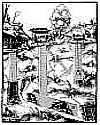
Died 22 Jan 1767 at age 47 (born 4 Aug 1719).
German geologist who is noted for fundamental work in stratigraphy (comparing sequences of layers in beds of sedimentary rocks) and who published the first geologic profile in 1756. He developed categories describing the origin of mountains. (“Primitive” mountains lack strata; “secondary” mountains have sedimentary formations with abundant fossils.) He analyzed an orange-red mineral from a mine in the Ural Mountains and recognized that it contained lead, but missed identifying a new element - chromium - that it contained. (The mineral was crocoite, a lead chromate (PbCrO4) from which Nicolas-Louis Vauquelin later isolated chromium in 1798). Lehmann died accidentally when a retort containing arsenic burst upon heating.«[Image: from Lehmann's Versuch einer Geschichte von Flözgebirgen (1756)]
German geologist who is noted for fundamental work in stratigraphy (comparing sequences of layers in beds of sedimentary rocks) and who published the first geologic profile in 1756. He developed categories describing the origin of mountains. (“Primitive” mountains lack strata; “secondary” mountains have sedimentary formations with abundant fossils.) He analyzed an orange-red mineral from a mine in the Ural Mountains and recognized that it contained lead, but missed identifying a new element - chromium - that it contained. (The mineral was crocoite, a lead chromate (PbCrO4) from which Nicolas-Louis Vauquelin later isolated chromium in 1798). Lehmann died accidentally when a retort containing arsenic burst upon heating.«[Image: from Lehmann's Versuch einer Geschichte von Flözgebirgen (1756)]

In 1997, American Lottie Williams was reportedly the first human to be struck by a remnant of a space vehicle after re-entering the earth's atmosphere. At 3 a.m., while walking in a park in Tulsa, Oklahoma, she saw a light pass over her head. “It looked like a meteor,” she said. Minutes later, she was hit on the shoulder by a six-inch piece of blackened metallic material. The debris that struck Ms. Williams has not been examined to confirm its origin, but a used Delta II rocket, launched nine months earlier, had crashed into the Earth's atmosphere half an hour earlier. NASA scientists believe that Williams was hit by a part of it, making her the only person in the world known to have been hit by man-made space debris.
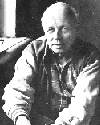
In 1980, Soviet dissident physicist Dr. Andrei Sakharov was arrested, stripped of his honors and exiled to Gorky from Moscow. For six years he was kept under police surveillance there.
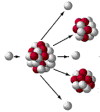
In 1939, the uranium atom was split for the first time using the cyclotron at Columbia University in New York City. Thus began the Manhattan Project, leading to the construction of the atom bomb. The project was subsequently moved inland to the University of Chicago to protect the research from any possible German bombing of New York. (Also the weight of the apparatus was so great that the floor was in danger of collapsing!) The cyclotron that performed the first-ever fission experiment was designed and built (1935-36) by John R. Dunning, who became Dean of the Engineering School, 1950-69). In 1965, the cyclotron was taken to the Smithsonian Institute. The original invention of the first cyclotron was by physicist Ernest Lawrence.
In 1907, Thomas A. Edison was issued a patent for an "Apparatus for Grinding and Separating Fine Materials" (No. 841,677).




